
With their spectacular, seasonal display, Christmas cactuses are a favorite for brightening the home during the holidays. And due to their verdant, trailing stems, they continue to look fabulous for the rest of the year – if you look after them properly.
Christmas cactus plant care is a little trickier than you might expect. So, it’s worth getting to grips with what not to do in terms of watering, lighting, and more. This will help you fend off bud-drop, wilting, and pests that can spoil their appearance and even lead to their demise.
Below, you’ll find five essential things to avoid when looking after these holiday houseplants, alongside helpful tips from the experts.
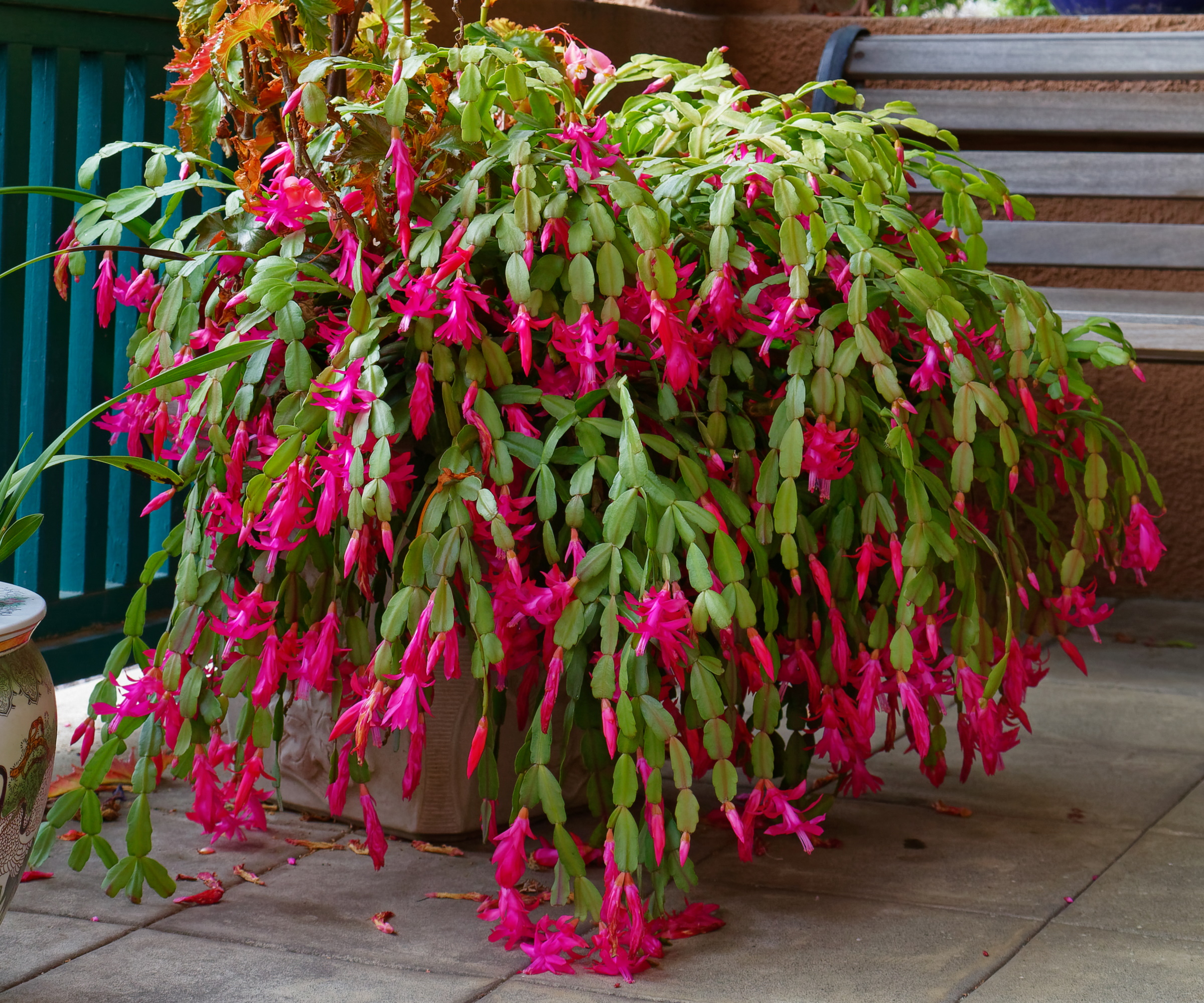
5 Christmas cactus mistakes to avoid
As with all indoor plants, getting the growing environment right for your Christmas cactus is key to helping it thrive. Avoiding the below Christmas cactus mistakes will help you achieve this, as well as make your Christmas cactus bloom year-on-year.
1. Watering your Christmas cactus too frequently
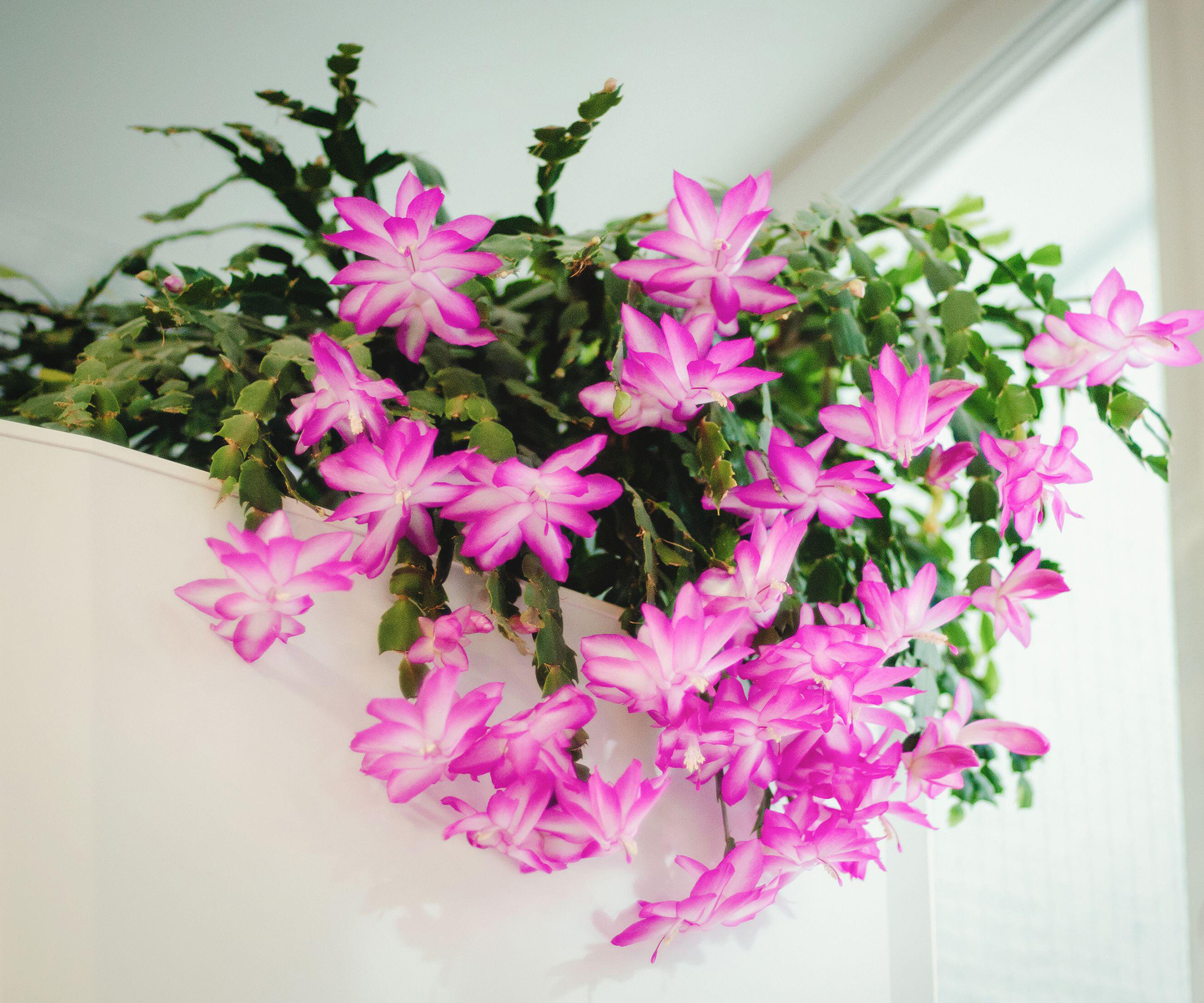
It’s important to know how often to water houseplants, but this is sometimes overlooked. Like all indoor succulents, Christmas cactuses are sensitive to overwatering, so always err on the side of caution.
Watering your Christmas cactus too often can result in droopy leaves that are darker in color and they may even have black spots.
These are all signs of houseplant root rot, also a common fiddle leaf fig problem, which is what your plant will experience if watered too much.
Not only this, but overwatering your Christmas cactus is a great way to encourage a mealybug infestation. Check hidden spots like leaf joints, as mealybugs love to hide there, and tend to occur along with mold.
Use insecticidal soap, or neem oil such as this one from Amazon to deal with the mealybugs themselves, and replace your plant's soil if you're also dealing with a mold infestation.
Likewise, fungus gnats may be attracted to your overwatered Christmas cactus. These small, dark flies are attracted to moist soil and lay their eggs in the top layer of the potting mix.
To get rid of fungus gnats, allow the soil to dry out between waterings, and avoid over watering, ensuring the soil is not over-fertilized.
The soil is a good indicator of whether it's time to top up your Christmas cactus' water – poke your finger into it before you water, to check that the top inch is nice and dry. Or, use this soil moisture meter from Amazon to identify the moisture level for you.
2. Not providing enough humidity
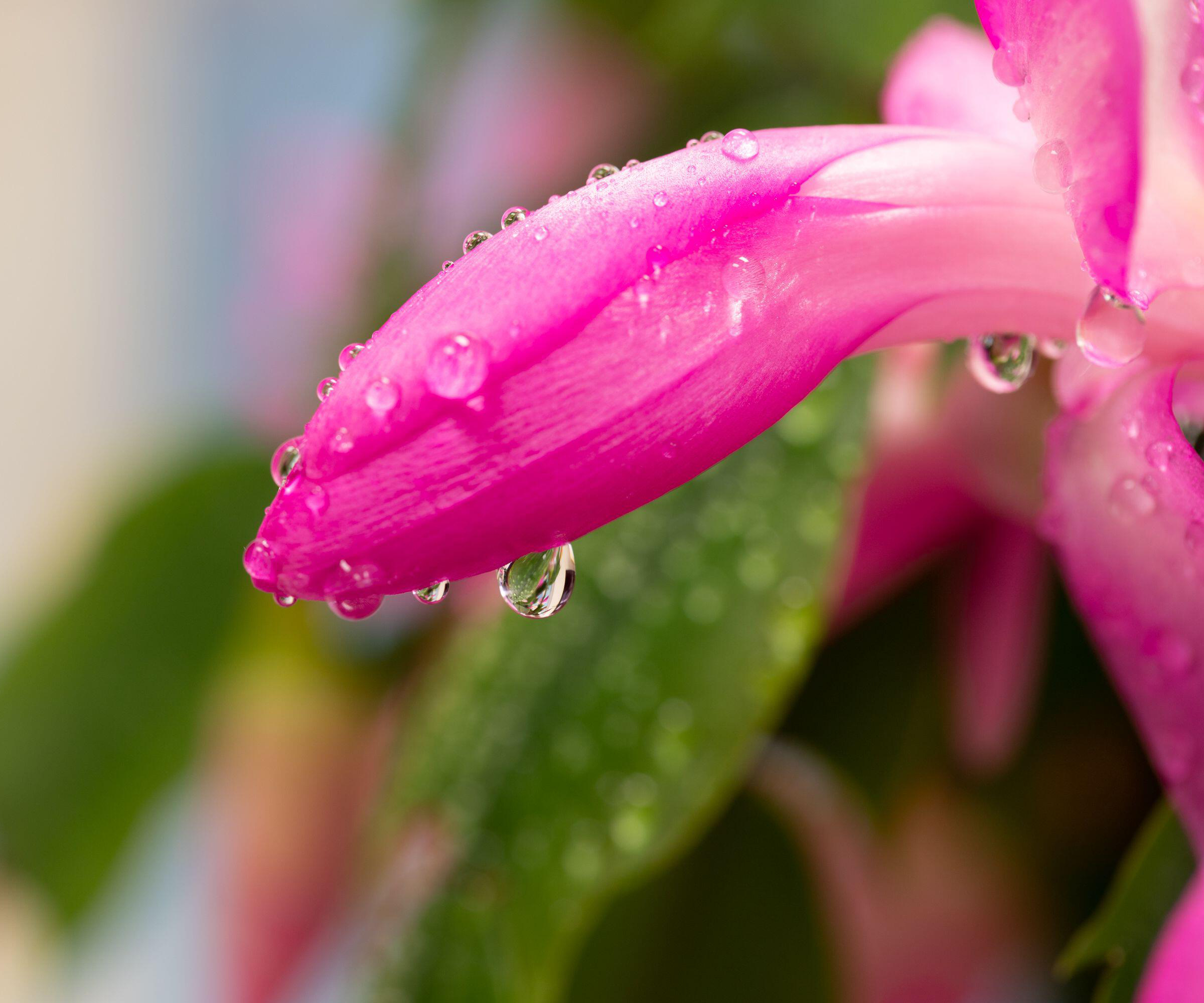
While holding back on excessive watering is beneficial, don’t forget to keep humidity levels relatively high, given Christmas cactuses’ origins as rainforest plants.
'They are ideal for humid environments, such as kitchens and bathrooms,’ says gardens writer Sarah Wilson. Alternatively, look for other ways to boost humidity around indoor plants. You could use this glass mister from Amazon, for instance, which has a beautiful vintage design.
This will also help keep spider mites away, as they love dry, dusty environments.
If you notice tiny webbing or tiny speckles on the leaves, you can be sure your Christmas cactus is a spider mite infestation. Make sure to clean your houseplant leaves and use insecticidal soap (from Amazon) to get rid of spider mites on houseplants.
3. Placing your Christmas cactus in the wrong light
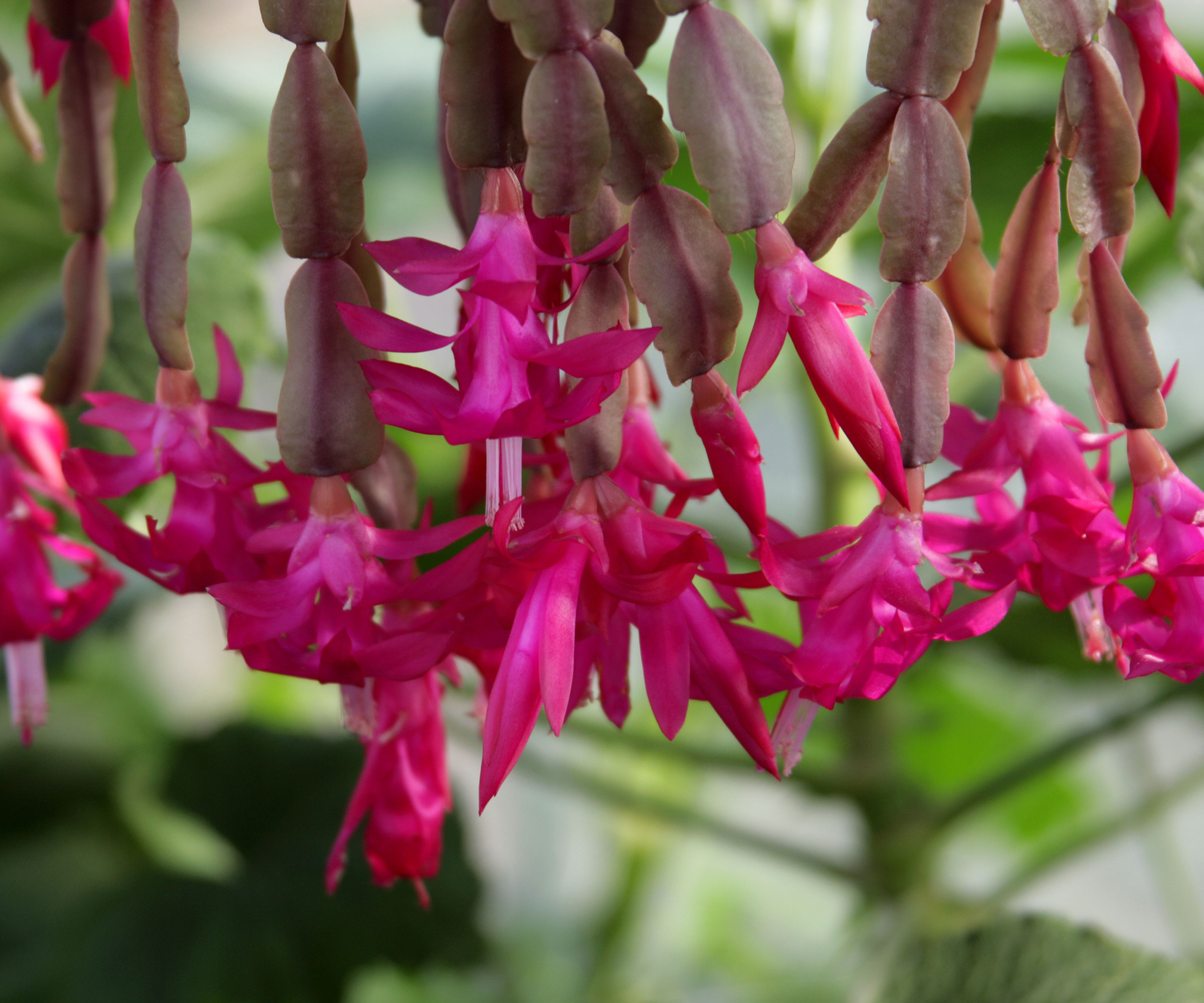
Striking a balance here is key. Direct sunlight can cause leaf scorch on your Christmas cactus, while insufficient light in the day can stop your Christmas cactus blooming.
For example, if it's in a bright, south-facing room, it should be kept at the furthest point from the window. In a darker room, you might try it on the windowsill, provided the spot isn't drafty. Or, use this grow light from Amazon to boost to ensure your plant gets enough light for flowering.
Do note that Christmas cactuses need periods of darkness too to help them flower, though.
4. Not maintaining a consistent temperature
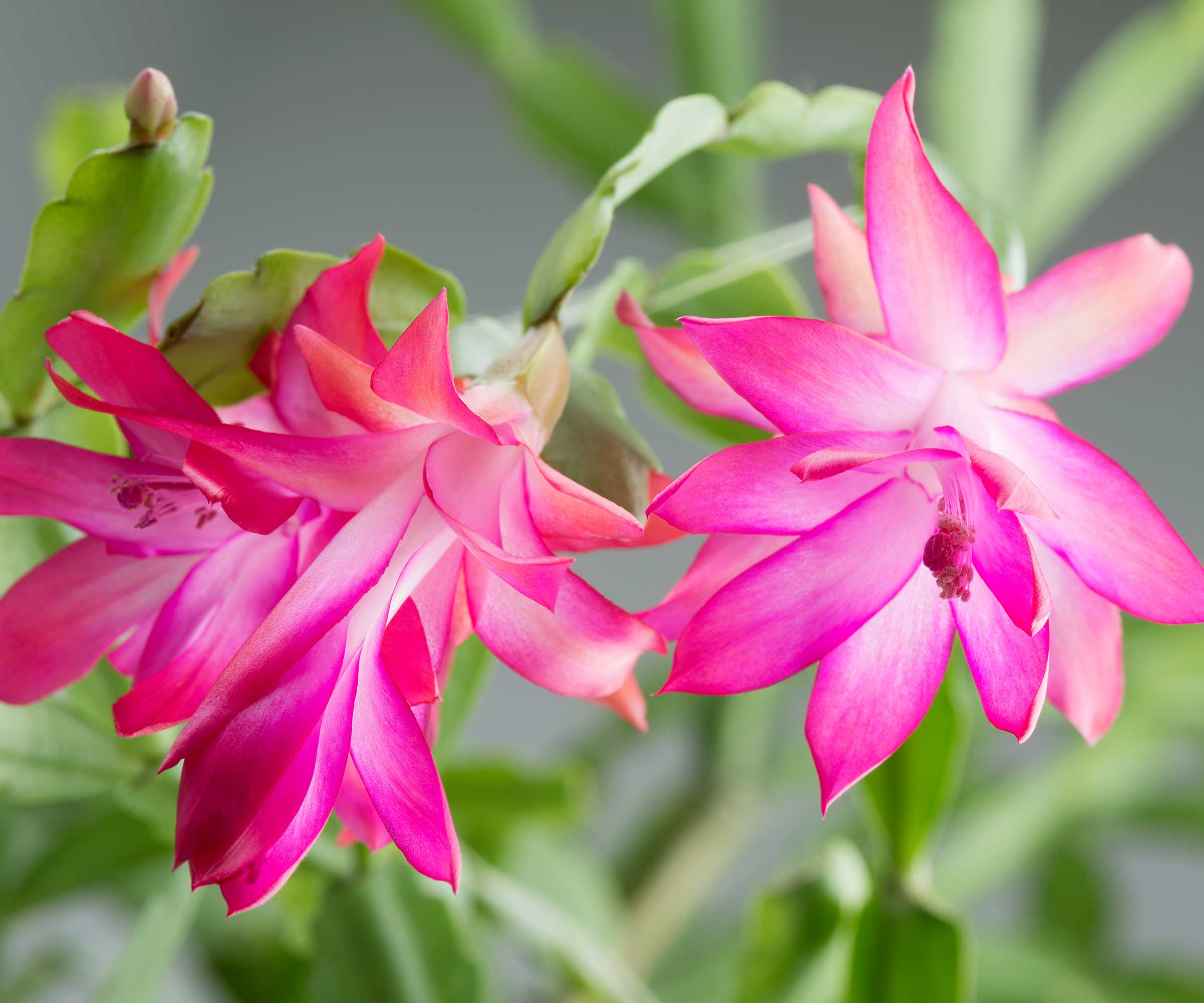
Horticulturist Justin Hancock of Costa Farms warns how big swings in temperature can cause bud drop. ‘Avoid drafts, too,' he adds – heating vents and drafty windows can shock the plant.
‘Prolonged exposure to temperatures over about 85ºF may potentially cause bud drop as well,’ Justin continues.
Note, too, that slightly cooler temperatures at night help encourage a Christmas cactus to bloom. ‘It can go as low as about 55ºF at night (but it still wants to be warm during the day),’ Justin says. ‘If you keep it in a spot where it’s 75ºF day and night, for example, it may not be able to bloom.’
Use this room thermometer from Amazon to monitor temperatures for your Christmas cactus.
5. Overfertilizing your Christmas cactus
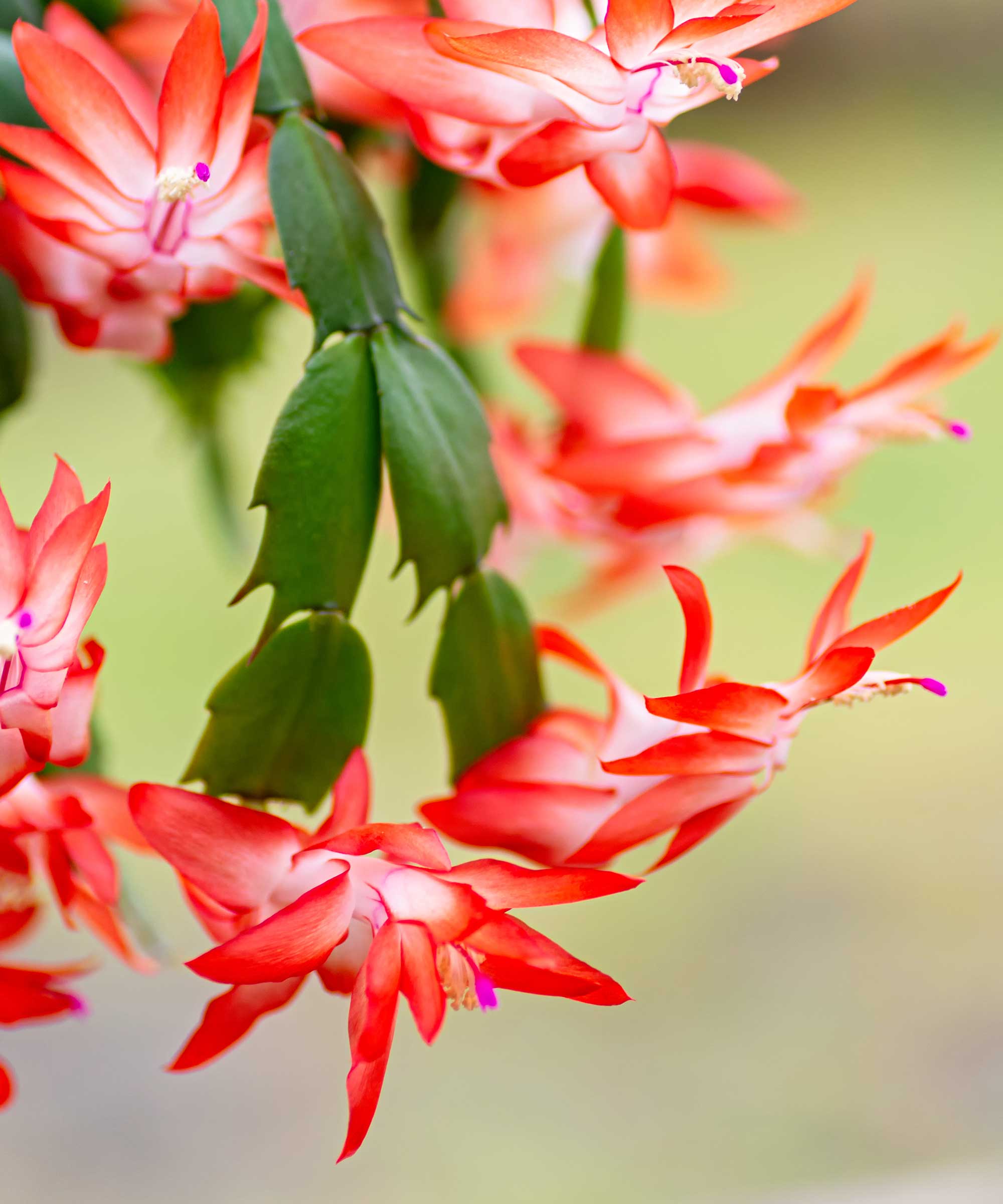
A general-purpose houseplant fertilizer (from Amazon) applied in spring and summer can help give Christmas cactuses a boost. However, it’s important not to over-fertilize plants as this can damage the roots.
‘It’s not super fussy about the type of houseplant fertilizer, but personally, I’m fond of slow-release fertilizers (like this one for succulents and cacti from Amazon),’ Justin says. ‘They slowly release essential plant nutrients to the plant over the course of weeks, so it’s a more natural process for the plant and there’s less of a chance of accidentally over-fertilizing compared to the products you mix with water.
'Plus, since it releases nutrients over time, you can get away with doing it as little as once or twice a year.’
You can even get a Christmas cactus fertilizer (available at Amazon), specifically formulated to support its growth and blooming.
FAQs
What does a stressed Christmas cactus look like?
When a Christmas cactus is under stress, you may notice brownish-red or pink leaves, which can result from insufficient watering or excessive sunlight. Other tell-tale signs are limp foliage, a lack of flowers, or buds falling off before they’ve bloomed.
Can I save my struggling Christmas cactus?
If you’ve made a mistake with your Christmas cactus care, all may not be lost. Repotting a Christmas cactus into fresh soil can be helpful if you’ve overwatered or over-fertilized it, which also gives you a chance to remove any dead roots.
If light or temperature is the issue, move the plant somewhere more suitable and monitor it closely for signs of improvement.
What is this sticky sap on my Christmas cactus?
If your Christmas cactus is looking a little worse for wear and has a sticky substance on it, it likely has a pest problem.
Scale insects are common pests in Christmas cacti, which cause brown spots on stems and secrete sticky segments. These sap-sucking insects can deprive all the nutrients of the cactus to such an extent that floral production and growth can be seriously affected. They then excrete sticky honeydew which has a black, sooty texture.
These soft-bodied, sap-sucking bugs come in from outside and are prime targets for cacti that are comfortably moist and well-nourished. Aphids will suck the sap directly from your plant, leaving honeydew behind. Irregular growth or yellow leaves are clear signs of infestation.
In both cases, you need to act fast to get rid of aphids on houseplants and get rid of scale insects.
The best way to manage soft brown scale insects is to use a cotton swab dipped in rubbing alcohol to remove them from the plant. Repeat the treatment once every five to seven days for at least a month. Neem oil (from Amazon) should then be applied to the afflicted regions.
One way to manage aphids is to rinse your plant under a tap with a steady stream of water, and wash as many aphids as you can down the drain. You could also place a sticky trap, such as this one from Amazon, near the pot, and/or a bowl of soapsuds made with one or two drops of dish detergent per two cups of water, to attract and catch flying aphids. For persistent pests, spray the foliage with neem oil.
Looking to grow your plant collection? Healthy Christmas cactuses can be propagated easily if you follow the tips in our dedicated guide. This is a great way to get more houseplants for free, and you can even gift them for the holidays.







